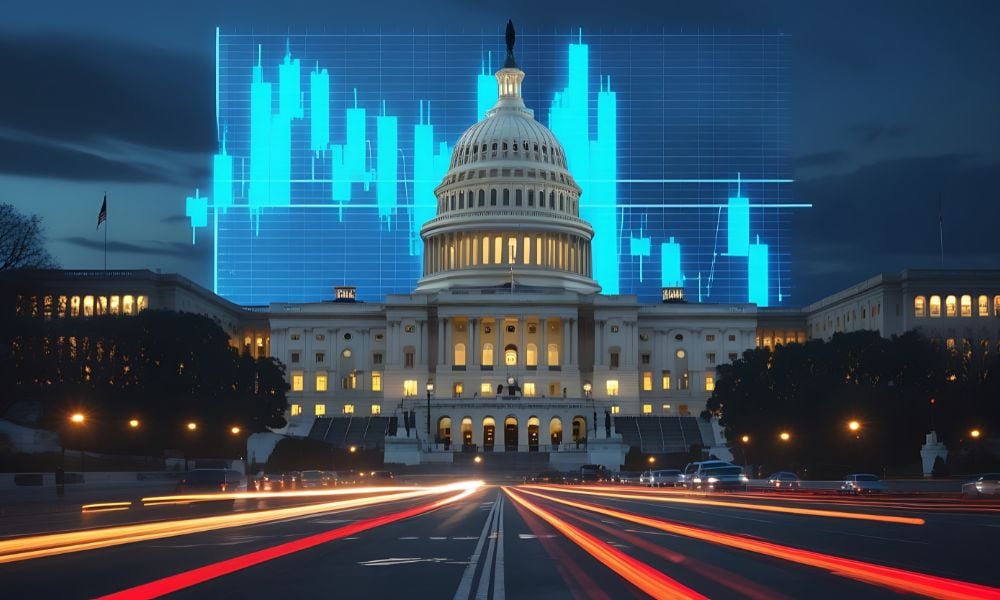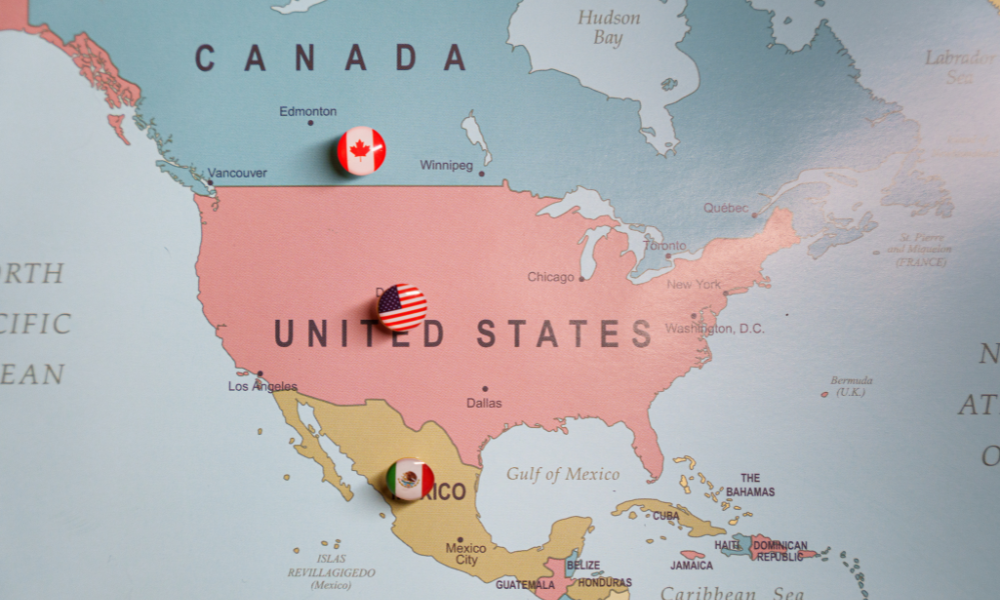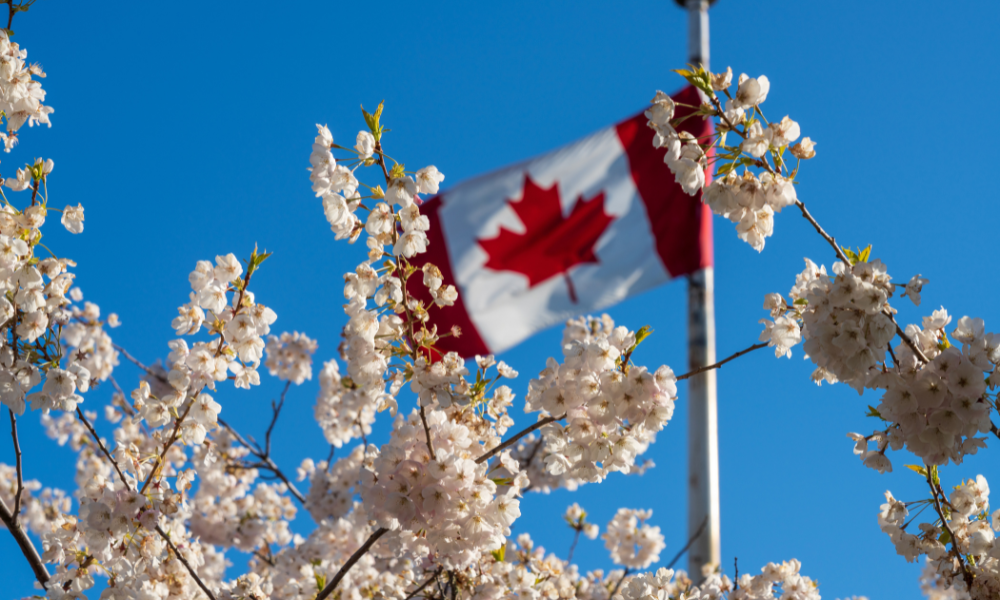Trump blames Biden as tariff-driven import surge drags US GDP into first contraction since 2022
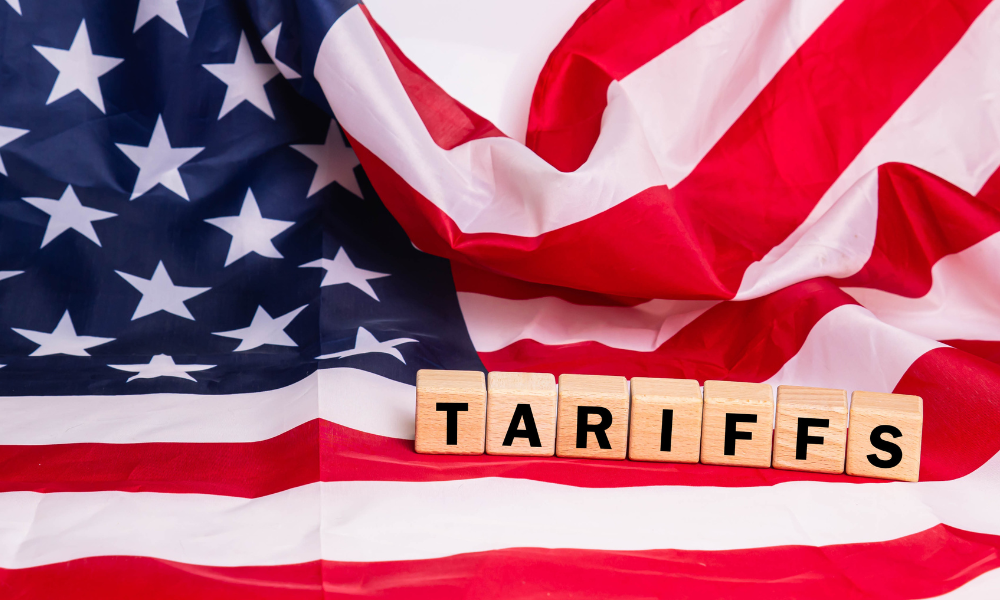
US President Donald Trump’s tariffs have rattled the US economy, sent inflation higher, and deepened public dissatisfaction.
In a CNN poll, 59 percent of Americans now say Trump’s policies have worsened economic conditions, while 60 percent believe they’ve raised the cost of living. A majority expect recession within the year.
US Gross domestic product contracted by 0.3 percent in the first quarter of 2025, according to the US Commerce Department, marking the first economic contraction since 2022.
“We think the downturn of the economy will get worse in the second half of this year,” wrote Carl Weinberg, chief economist at High Frequency Economics. “Corrosive uncertainty and higher taxes — tariffs are a tax on imports — will drag GDP growth back into the red by the end of this year.”
Market turmoil and tariff fallout
Following the release of the GDP data, financial markets dropped sharply.
The Canadian Press reports Dow Jones falling 400 points at the open, the S&P 500 lost 1.5 percent, and the Nasdaq slid 2 percent.
According to the Financial Post, the US GDP drop was driven by a 41.3 percent surge in imports, the largest jump in nearly five years. Because imports subtract from GDP, net exports reduced the quarterly growth by nearly five percentage points — the largest such drag on record.
Peter Navarro, Trump’s trade adviser, told CNBC the data was “the best negative print I have ever seen in my life,” pointing to strong investment figures.
Ryan Young of the Competitive Enterprise Institute told CNN that “people are stockpiling now. That’s helping the economy now — and then they’re going to spend even less.”
Inflation and the Fed’s dilemma
US Inflation accelerated beyond expectations.
As per the GDP report, the US Federal Reserve’s preferred inflation gauge — the Personal Consumption Expenditures price index — rose at a 3.6 percent annual rate.
Core PCE inflation, which excludes food and energy, hit 3.5 percent.
The Fed’s target remains two percent.
Oxford Economics’ Ryan Sweet wrote that “the economy was essentially stagnant in the first three months of the year while growth in headline and core inflation accelerated, fanning concerns of stagflation.”
Tariff timing triggers stockpiling
As reported by CNN and NBC, businesses rushed to import goods ahead of Trump’s April 2 “Liberation Day” tariffs, pushing up business inventories and inflating investment figures.
Business investment rose by 22.5 percent, the highest since 2020. According to Financial Post, that was driven partly by a rebound in commercial aircraft shipments and increased purchases of computers and IT equipment.
White House adviser Stephen Miran told CNN that “the uptick in business investment is not what firms do when they’re concerned about the economic outlook.”
Consumer spending slows
Consumer spending, which accounts for roughly 70 percent of US GDP, grew 1.8 percent in the first quarter, according to The Canadian Press — down from 4 percent in Q4 2024 and the slowest since mid-2023.
The White House framed the spending figure positively.
“It’s no surprise the leftovers of Biden’s economic disaster have been a drag on economic growth, but the underlying numbers tell the real story of the strong momentum President Trump is delivering,” said Trump press secretary Karoline Leavitt.
However, the CNN poll revealed that 71 percent of Americans now describe economic conditions as poor.
“Everything I worked for all my life is rapidly [disappearing],” wrote a 59-year-old Republican respondent from Georgia. “It will probably take years to recover what I have lost due to what’s going on.”
Hiring falters amid caution
US employment data suggests companies are hesitating. As per payroll provider ADP, private employers added 62,000 jobs in April, down from 147,000 in March.
Nela Richardson, ADP’s chief economist, said that “unease is the word of the day. Employers are trying to reconcile policy and consumer uncertainty with a run of mostly positive economic data.”
Sectors such as education, healthcare, IT, and business services reported job losses. Business and professional services include fields like accounting, advertising, and engineering.
Public divided, outlook dim
A CNN poll conducted April 17–24 found that 55 percent of respondents called Trump’s tariff strategy “bad policy,” while only 28 percent supported it.
Asked to name their top financial concern, Americans cited inflation, food prices, and living costs.
One Pennsylvania respondent wrote, “We are suddenly down an income with costs rising all around us... Everything is just so, so much worse than it was before Trump took office.”
In a Truth Social post, Trump dismissed the negative figures.
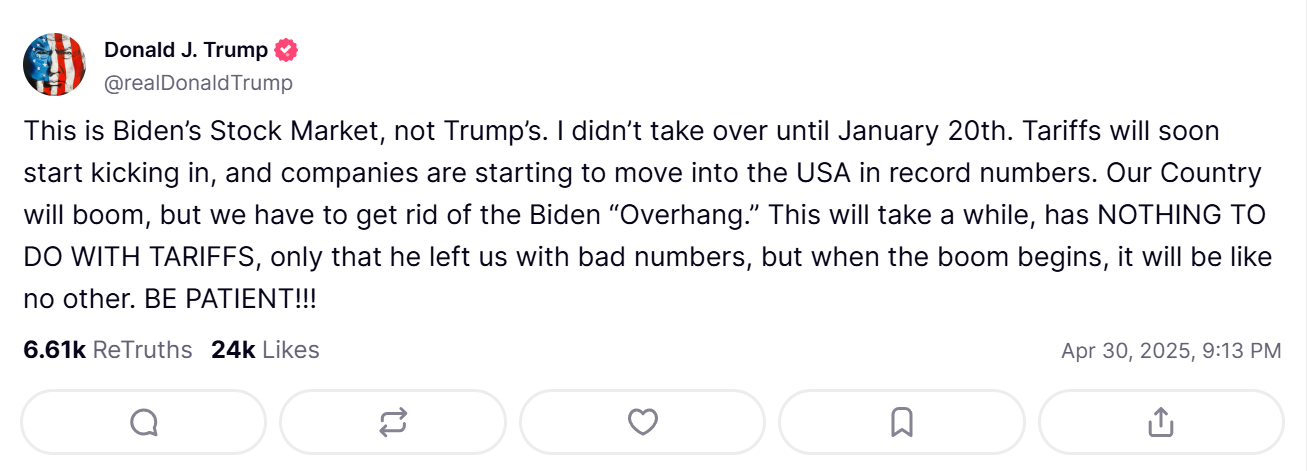
“This will take a while, has NOTHING TO DO WITH TARIFFS, only that [Biden] left us with bad numbers,” he wrote. “When the boom begins, it will be like no other. BE PATIENT!!!”
Second-quarter rebound uncertain
According to JP Morgan analysts, if imports collapse in Q2, US GDP may bounce back temporarily.
Morgan Stanley analysts also noted that while Q1 showed weakness, “consumption and investment likely slowed but did not reverse.”
But as Gregory Daco of Ernst & Young told CNN, “we may actually see that in the second quarter, consumer spending, activity, business investment and inventories are all major drags on growth.”
Ian Shepherdson of Pantheon Macroeconomics warned that a recession becomes “the most likely outcome” if the full slate of tariffs takes effect in July.

